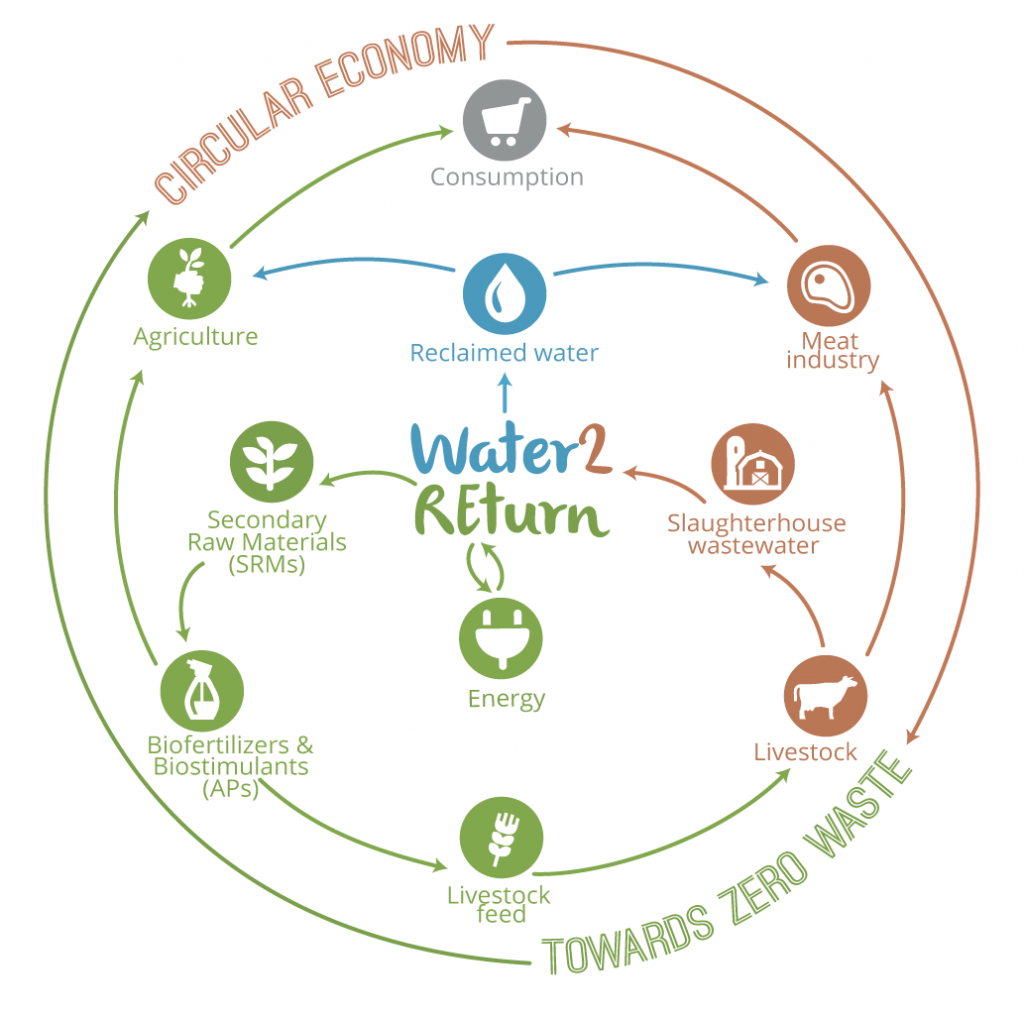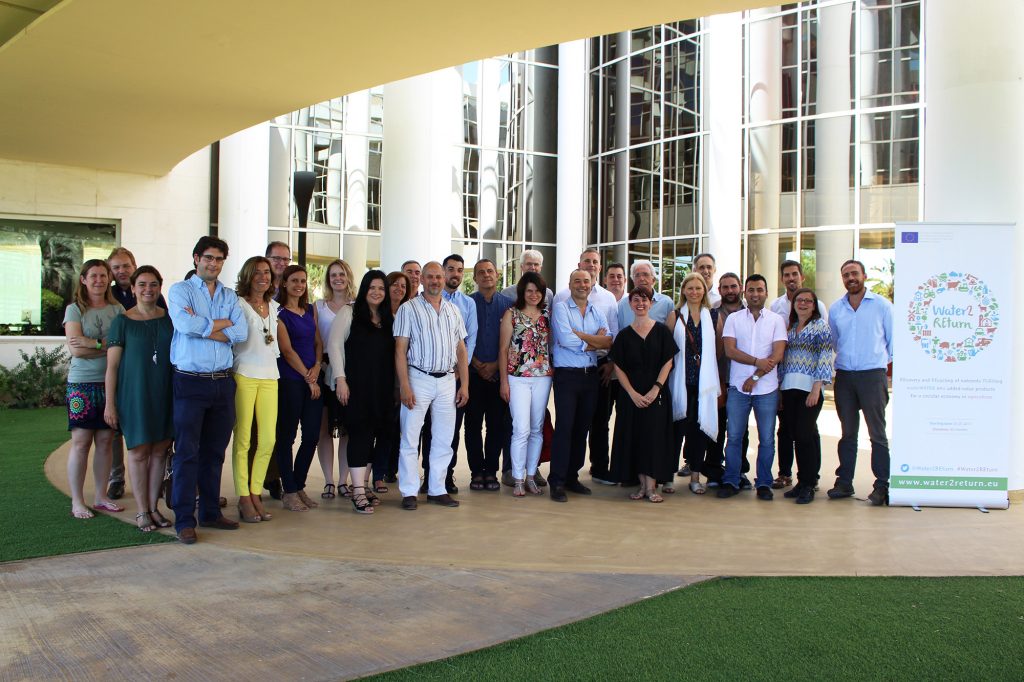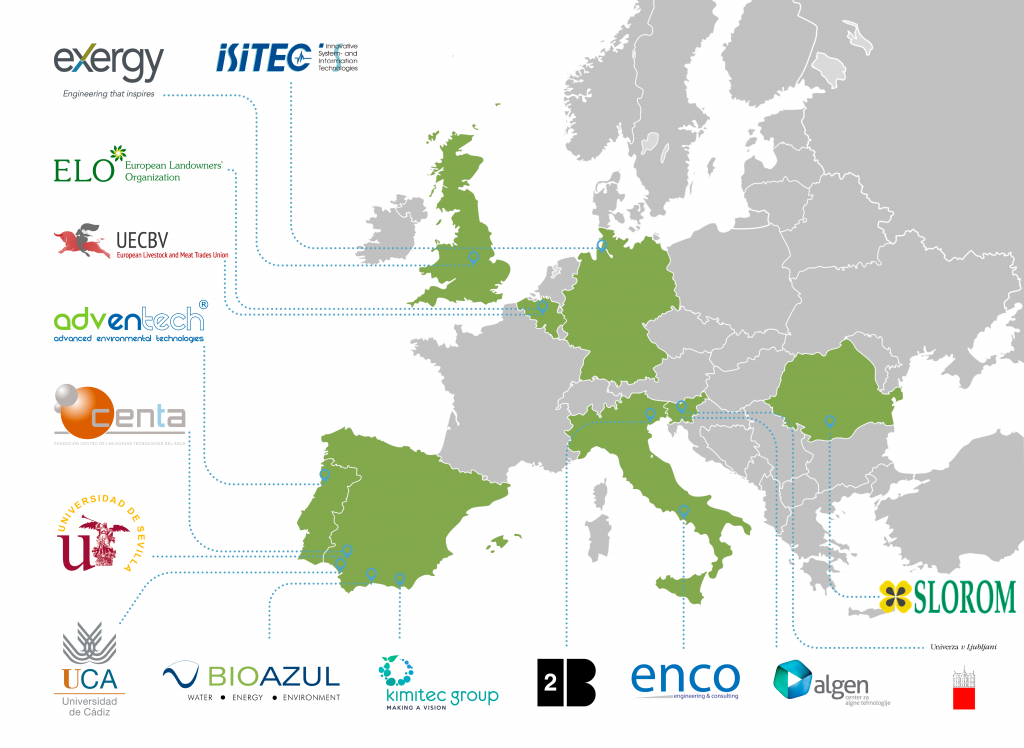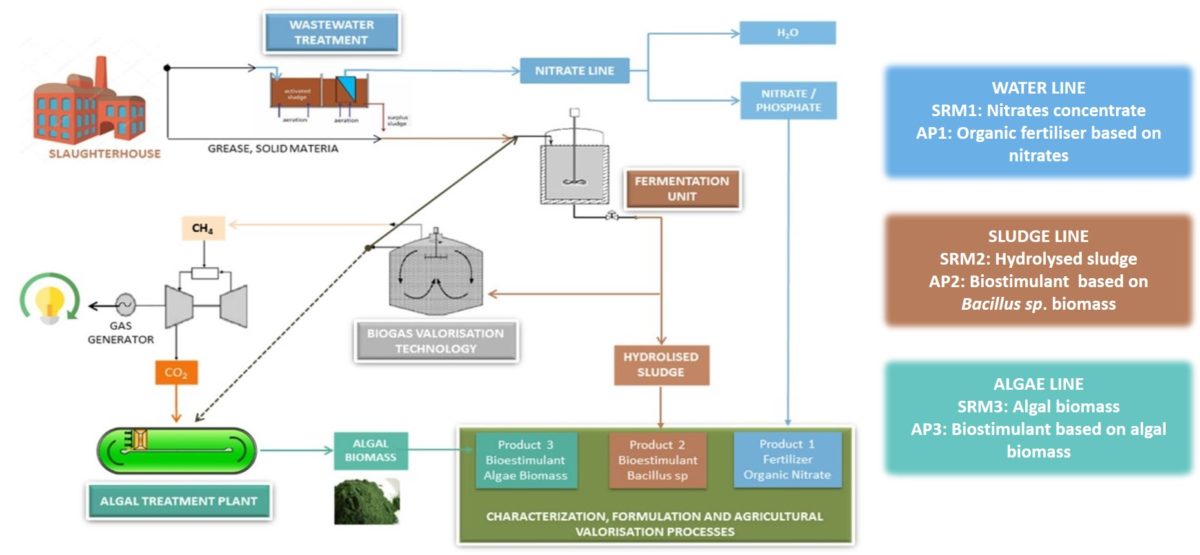Description
Water scarcity and resources recovery are global concerns. Sustainable solutions are needed to use water in the best possible way and to recover resources from going to waste.
Slaughtering is a water-intensive industry, and the wastewater it generates contains a high proportion of organic matter, being a valuable source of nutrients if properly recovered.
Addressing water scarcity while simultaneously recovering valuable resources is what W2R sets out to achieve. Industrial symbiosis is at the core of W2R, in which wastewater treatment facilities in slaughterhouses are turned into bio-refineries under a Circular Economy approach.
W2R, an H2020 Innovation Action co-funded by the European Commission, brings together 15 multidisciplinary actors from 8 EU countries to implement a demonstrative application for slaughterhouse wastewater treatment and large-scale nutrient recovery in the “Matadero del Sur” slaughterhouse. It is located in Andalusia (Spain), a region well known for the challenges it faces in terms of water scarcity, what makes it an ideal place to test W2R technology. Nutrients recovered from its wastewater will be turned into value-added products for the agrochemical industry and, consequently, for the agricultural sector, that seeks more sustainable products that meet increasingly restrictive legislative requirements. At the same time, Matadero del Sur addresses its wastewater management problems and act as an exemplar for other slaughterhouses all over Europe.
Added value
Water2REturn commercial outcomes:
- An integrated system to treat wastewater while recovering nutrients, that can be customised according to the needs of the end user.
- 3 raw materials: nitrate and phosphate concentrate, hydrolysed sludge and algal biomass, the basis for further manufacturing agronomic products.
- 3 agronomic products: 1 organic fertiliser and 2 biostimulants, that will be ready for commercialisation. They will be manufactured in Spain and tested in Slovenia, Romania, Lithuania and Spain.
Additional expected outcomes:
- Reduction in the adverse environmental impacts of wastewater discharge by achieving nutrient recovery rates of 90-95% for nitrogen and phosphorous and reducing the amount of wastewater discharged to the environment by 90%. Moreover, the treated water that is obtained on-site can be further used at the slaughterhouse, thereby reducing operational costs.
- Reduction in waste diverted to landfills by 80%. After removing the organic elements from the slaughterhouse wastewater, the remaining inorganic fraction (less than 20% of the wastewater) will be the only residual element taken to landfills.
- Energy self-sufficiency of slaughterhouses wastewater treatment plants – biogas upgrading and valorisation will allow achieving self-sufficiency rates and savings up to 25% in the slaughterhouse, with the consequent reduction of CO2 and greenhouse gases emissions.
Challenges
- Legal requirements:
- Nitrates Directive (91/676/EEC) addresses pollution by nitrates from agricultural sources and requires Member States to monitor water quality, identify polluted water and “Nitrate Vulnerable Zones”, and establish Codes of Good Agricultural Practice & Action Programmes.
- Common Agricultural Policy reform (CAP 2014-2020) links 30% of CAP subsidies to farmer’s ability to achieve environmental benefits, including fertiliser use restriction for at least 5% of their arable land.
- EU Animal By-products Regulation (ABPs, Reg. (EC) No 1774/2002 repealed by 1069/2009) prohibits land disposal of animal wastes (including wastewaters), increasing waste disposal costs.
- Sewage Sludge Directive (86/278/EEC) prohibits using untreated sludge on agricultural land unless it is injected/worked into soil to avoid GHG emissions.
- Water Framework Directive (2000/60/EC) sets objectives for water protection by a “combined approach” of emission limit values & water quality standards.
- EU Pollutant Emission Register sets rules on emission parameters to the water for the industrial sectors listed in the IPPC Directive (2008/1/EC on Integrated Pollution Prevention & Control).
- Difficulties for treating large quantities of highly polluted animal wastewater. EU slaughterhouse operators currently have limited treatment options (incineration, composting or anaerobic digestion). So, they have to invest in costly wastewater management facilities to treat high lipid and protein-containing waste.
Partners
Bioazul S.L. (BIOAZUL), ES – Coordinator
University of Seville (USE), ES
University of Cadiz (UCA), ES
Foundation Centre for the New Water Technologies (CENTA), ES
Agroindustrial Kimitec (KIMITEC), ES
Adventech, Advanced Environmental Technologies Lda (ADVENTECH), PT
AlgEn, Algal Technology Centre, d.o.o. (ALGEN), SL
University of Ljubljana (UL), SL
Enco Consulting Srl (ENCO), IT
2B Srl (2B), IT
European Livestock and Meat Trading Union (UECBV), BE
Isitec GmbH (ISITEC), DE
Exergy Ltd (EXERGY), UK
European Landowners’ Organization (ELO), BE
Slorom D&C Draghiceni Srl (SLOROM D&C), RO



